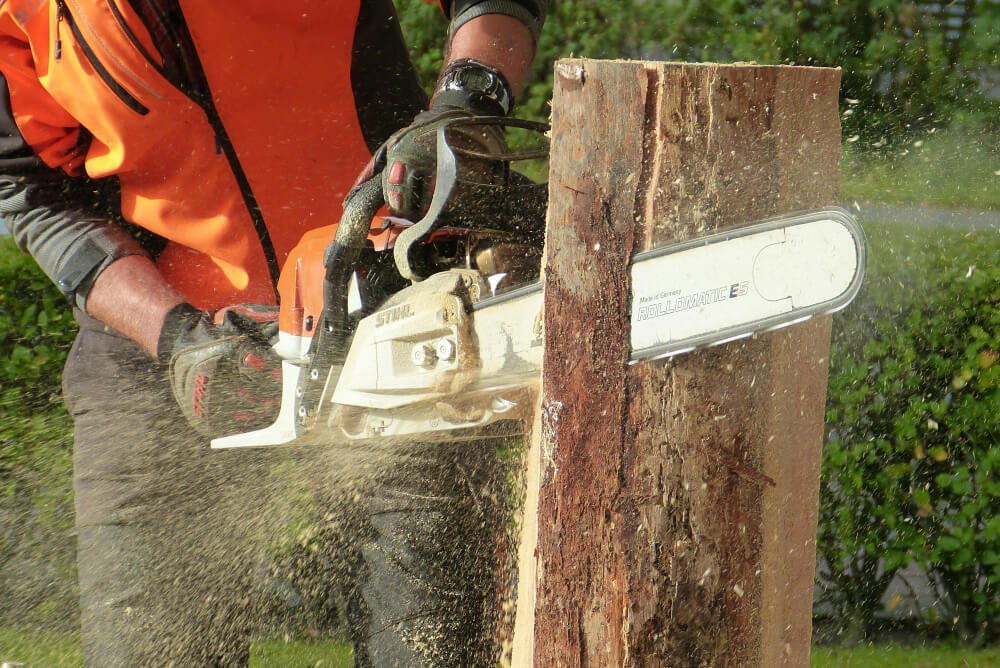Why Tree Cutting Can Be Beneficial for Landscape and Property

Although it is sometimes seen as a contentious activity, tree cutting is actually a useful tool for managing landscapes and enhancing the overall usefulness, safety, and aesthetics of properties. Tree removal can have major positive effects on the environment when done carefully and professionally, despite the fact that many people may believe it is bad for the environment. This article will examine the main justifications for why tree trimming can improve properties and landscapes, providing a thorough grasp of the advantages of this activity.
1. Improved Safety and Risk Reduction
Ensuring safety is one of the most important justifications for tree cutting. Serious risks can arise from overgrown or dead trees, particularly during storms, high winds, or periods of intense precipitation. Trees that are weak, decaying, or broken are more likely to fall and injure persons, property, or even cars. Property owners reduce the possibility of mishaps like falling limbs, which can cause injuries or expensive property damage, by getting rid of these trees.
For example, a big, shaky tree near a house can endanger driveways, fences, or roofs. Homeowners can avoid catastrophic damage and maintain the safety and security of their property by removing these trees. Furthermore, taking down dangerous trees lowers liability risks, particularly for establishments or public areas.
2. Enhancing Aesthetic Appeal and Property Value
When done properly, tree trimming can greatly improve a property’s aesthetic appeal. A property’s overall beauty is diminished by overgrown or unkempt landscapes, which can convey a sense of neglect. Trees that are overgrown or positioned incorrectly might be removed to make room, improve sightlines, and balance the environment.
Pruning trees or eliminating extra foliage, for example, lets light in and promotes the growth of flowers, grass, and other plants. The end effect is a neater, more aesthetically beautiful, and more welcoming outdoor area.
Additionally, well-kept homes with carefully pruned or intentionally felled trees typically fetch greater prices. In real estate, curb appeal is quite important. A well-planned landscape with strategically planted trees can raise the desirability of a house and, eventually, its resale value.
3. Improved Sunlight and Air Circulation
Although trees are essential for cooling and providing shade, overgrown or closely spaced trees can restrict airflow and sunlight. Excessive tree cover can sometimes produce damp, shaded circumstances that promote the spread of pests, mold, or mildew, which can have an adverse effect on a property’s overall environment as well as its plant life.
Property owners can benefit the vegetation and the people who live or work there by carefully pruning trees to increase air circulation and sunshine penetration. More sunshine promotes the healthiest growth of garden plants, grass, and shrubs, and better ventilation lessens the possibility of humid, stagnant situations that might attract pests.
For instance, tree thinning can reduce competition for sunlight and ensure that certain areas of the property receive adequate light, contributing to the vitality of other plant life.
4. Restoring Balance and Biodiversity in Landscapes
Tree growth can become unbalanced and thick over time, which can alter the landscape’s general structure. Trees may occasionally crowd one another, vying for resources like nutrients, water, and sunlight. Weak, sickly trees that are more vulnerable to pests and diseases may result from this.
By carefully eliminating trees that are fighting with one another, tree pruning can bring a landscape back into balance and promote stronger, healthier development. Tree thinning promotes biodiversity in both plant and animal life by allowing the remaining vegetation to flourish. Opening up the canopy, for instance, promotes the growth of native plants, wildflowers, and underbrush, all of which draw pollinators and other beneficial animals.
A diverse and well-maintained landscape is more resilient to pests, diseases, and extreme weather conditions. Encouraging the growth of a mix of tree species can also contribute to a healthier ecosystem by supporting a variety of flora and fauna.
5. Facilitating Better Use of Outdoor Spaces
Trees that are overgrown can make outdoor areas crowded and challenging to use effectively. Excessive tree cover can restrict the use of spaces such as backyards, gardens, and commercial properties. Property owners can increase the usability of outdoor areas for a variety of purposes, such as entertaining, gardening, and pleasure, by carefully pruning trees.
For example, clearing a few big trees can make room for playgrounds, gardens, or leisure spaces. In commercial settings, removing tree cover might make way for the construction of landscaped gardens, walking trails, or seating areas, which will increase the property’s overall usefulness and appeal.
Furthermore, trees positioned carefully can shade outdoor spaces without crowding them, maintaining the property’s usefulness, beauty, and appeal.
6. Promoting Healthier Tree Growth and Sustainability
Contrary to the perception that tree cutting is harmful to the environment, selective tree cutting can promote healthier tree growth. By removing overcrowded or diseased trees, the remaining trees are better able to access essential resources such as sunlight, water, and nutrients.
Thinning trees allows for improved root systems and reduces competition among trees, leading to stronger, more resilient trees. Furthermore, removing trees that are beyond their prime lifespan prevents their decline, reducing the risk of disease spreading to other trees.
In terms of sustainability, tree cutting can also pave the way for planting new, healthier trees that can contribute to long-term ecological health. For example, replacing removed trees with native species not only supports biodiversity but also contributes to carbon sequestration, reducing the overall carbon footprint of the property.
Final Thoughts
When done carefully and ethically, tree cutting may be quite advantageous even though it may appear like a contentious practice. Tree cutting may improve landscapes and increase the value of properties by boosting ecosystem health, improving functioning, improving aesthetics, and putting safety first. Carefully controlled tree pruning, whether for residential or commercial properties, maintains the harmony between nature and property, creating safer, more appealing, and long-lasting settings.
